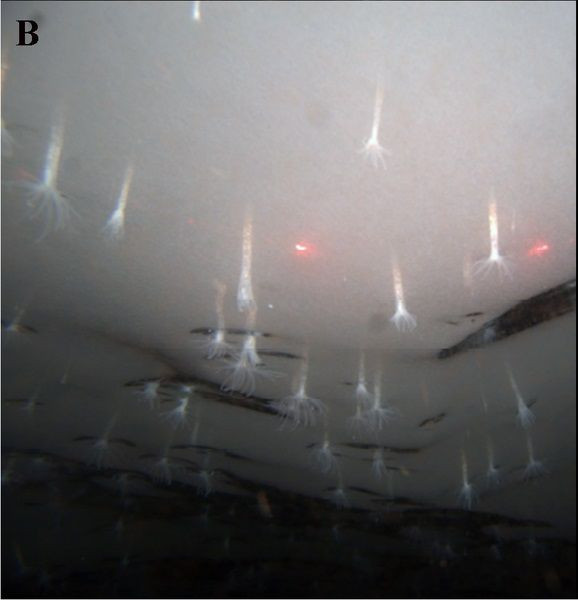New Species Of Sea Anemone Found In Antarctica, Mysterious Edwardsiella Andrillae Lives Upside Down Under Ice

Mother Nature is full of surprises. Scientists exploring the Ross Ice Shelf, Antarctica’s largest floating body of ice, stumbled on something completely unexpected. A new species of sea anemone, dubbed Edwardsiella andrillae, was found dangling in the water hundreds of feet below the ice shelf.
Researchers from the Antarctic Geological Drilling Program, or ANDRILL, discovered the sea anemone while testing underwater equipment, including a remote-controlled robot. The team had drilled a hole through hundreds of feet of ice and dropped survey equipment down it when they chanced upon the strange species of sea anemone.
"We were doing survey work and melted a hole through [850 feet] of ice," Frank Rack, ANDRILL’s executive director, told ABC News. "We deployed the robot and as it got closer, the cameras detected anemones."
Tens of thousands of them, in fact. The anemones were opaque-white in color, measured about .63 to .79 inches in length and had stringy bodies topped with tentacles. While most sea anemone species cling to rocks or reefs, this new species found underneath Antarctica actually suspended itself from the bottom of the ice like fire sprinklers sticking out from a ceiling. This is the first known species of sea anemone to live in ice.
"The pictures blew my mind," Marymegan Daly of Ohio State University, who studied the specimens retrieved by ANDRILL team members in Antarctica, said in a statement, according to Nature World News.
The species, named for the expedition team that found it, was actually discovered in 2010, but was publicly announced last month in an issue of the journal PLOS One. The study notes that scientists still don’t know much about the mysterious new species of anemone, including how it is able to survive in such a harsh environment.
"Just how the sea anemones create and maintain burrows in the bottom of the ice shelf, while that surface is actively melting, remains an intriguing mystery," Scott Borg, head of the Antarctic Sciences Section in the NSF's Division of Polar Programs, said, according to Alaska Native News. "This goes to show how much more we have to learn about the Antarctic and how life there has adapted."
According to the Guardian Liberty Voice, the researchers also noted several other odd species living underneath the Ross Ice Shelf, including a fish that swims upside down, treating the base of the ice shelf like the sea floor. They also saw an unknown organism they dubbed the “eggroll” based on its shape, size and color.
© Copyright IBTimes 2024. All rights reserved.






















